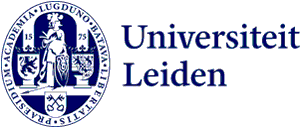
A real professor in the classroom: ‘What do you like best about your work?’
Each year on the university’s birthday, children at primary schools in Leiden and The Hague have a lesson from a professor – about children’s rights and robots in surgery, for example. The children get to do activities. And ask questions: ‘How do you become a professor?’
The year 7 pupils (aged around 10-11) from De Spiegel primary school in The Hague have put on white lab coats, blue gloves and safety glasses. Today the class and their teacher Marisca are receiving a visit from Fijs van Leeuwen, Professor of Radiology, and his colleague Maarten van Meerbeek, a research technician at the LUMC. ‘I’m the professor’, says Van Leeuwen, ‘but you can call me Fijs.’
Children’s rights in Leiden
At the same time, 50 other professors from the university are visiting schools in Leiden, The Hague and the surrounding area. Ton Liefaard, for instance, Professor of Children’s Rights. He tells his group of pupils from De Arcade primary school in Leiden about his field and why children’s rights are so important.
-
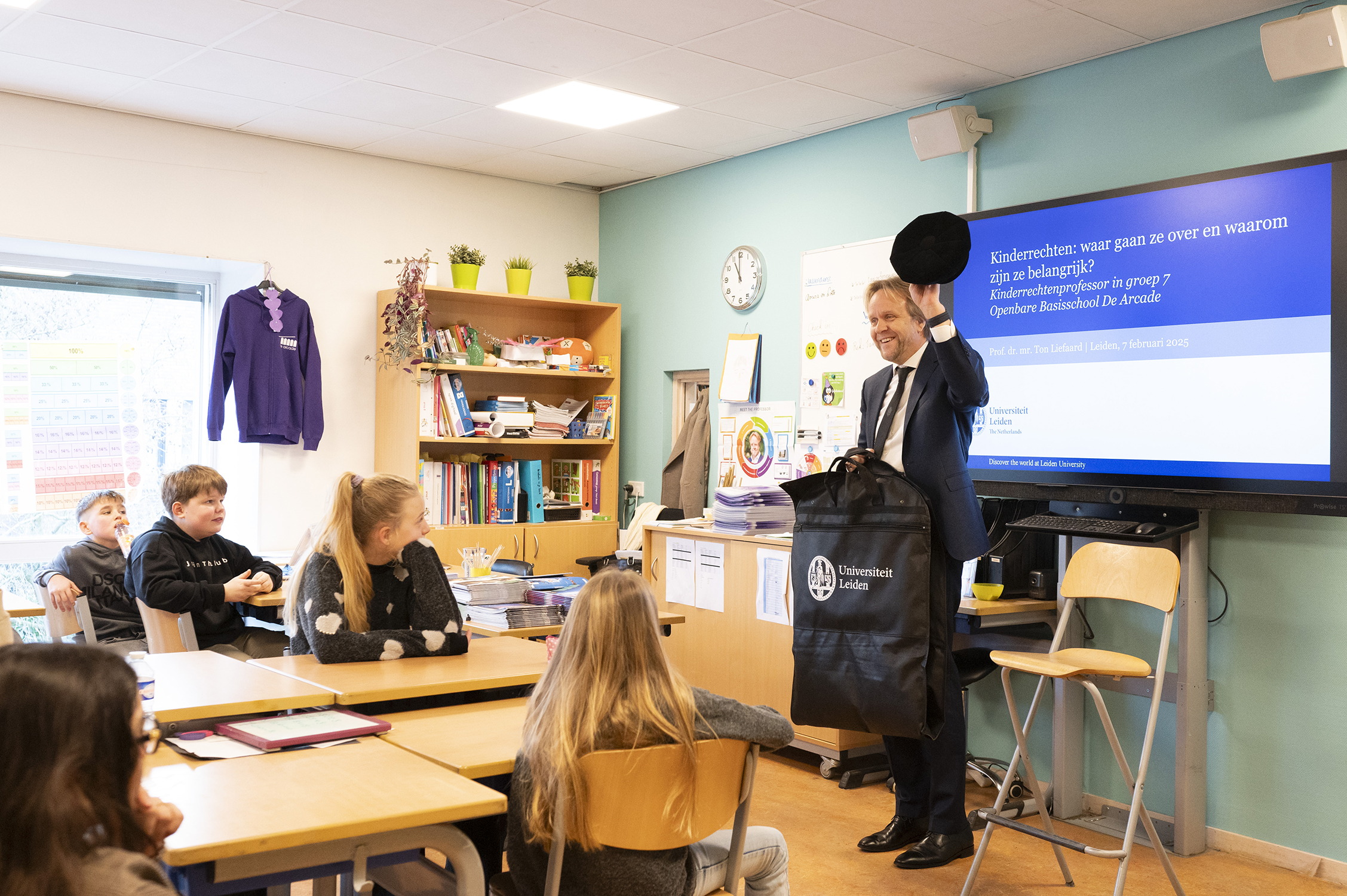
Professor Ton Liefaard from regular guy in suit, to ... -

... real professor in gown -
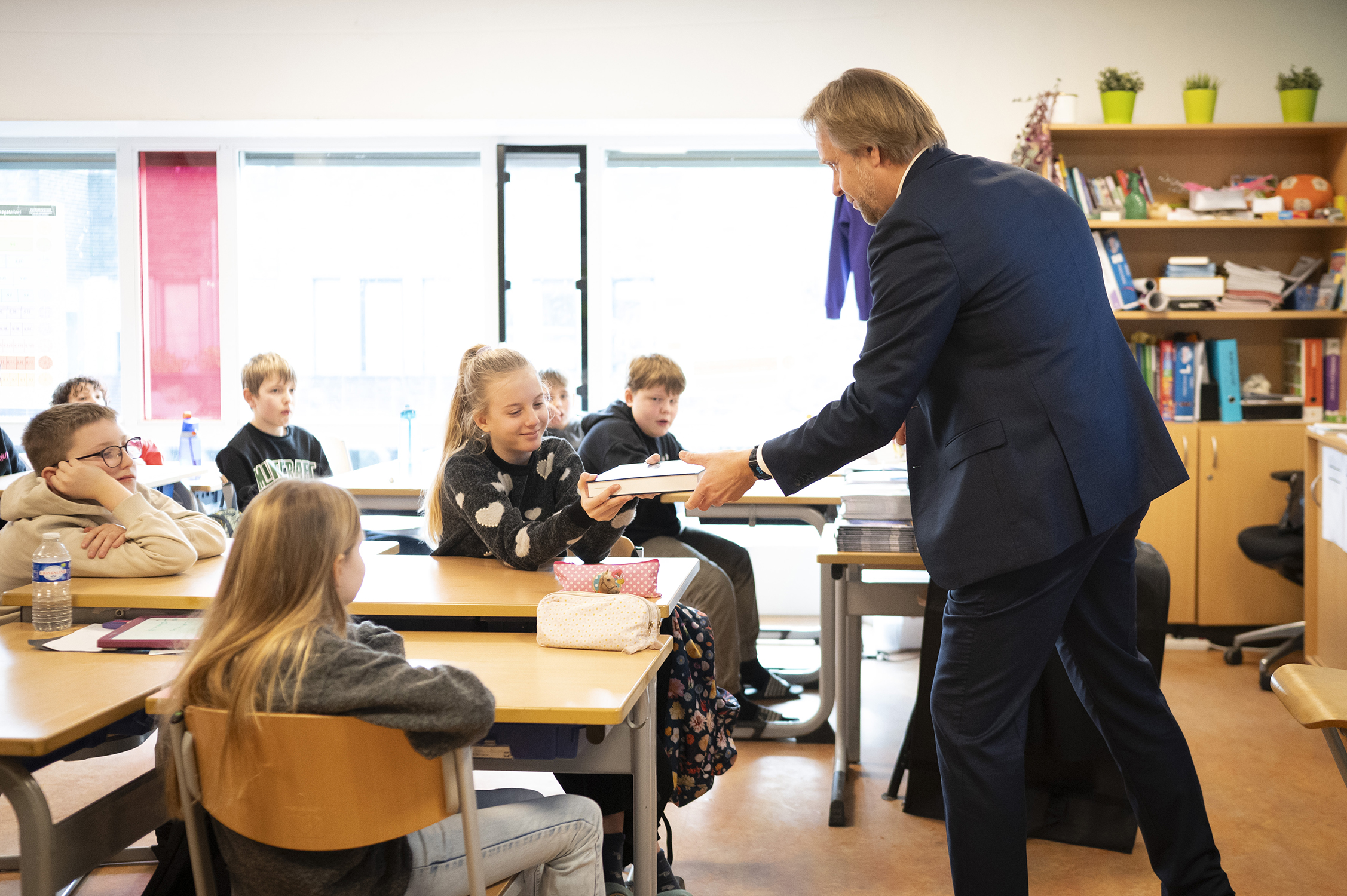
The class from De Arcade primary school in Leiden look through a book on children’s rights -
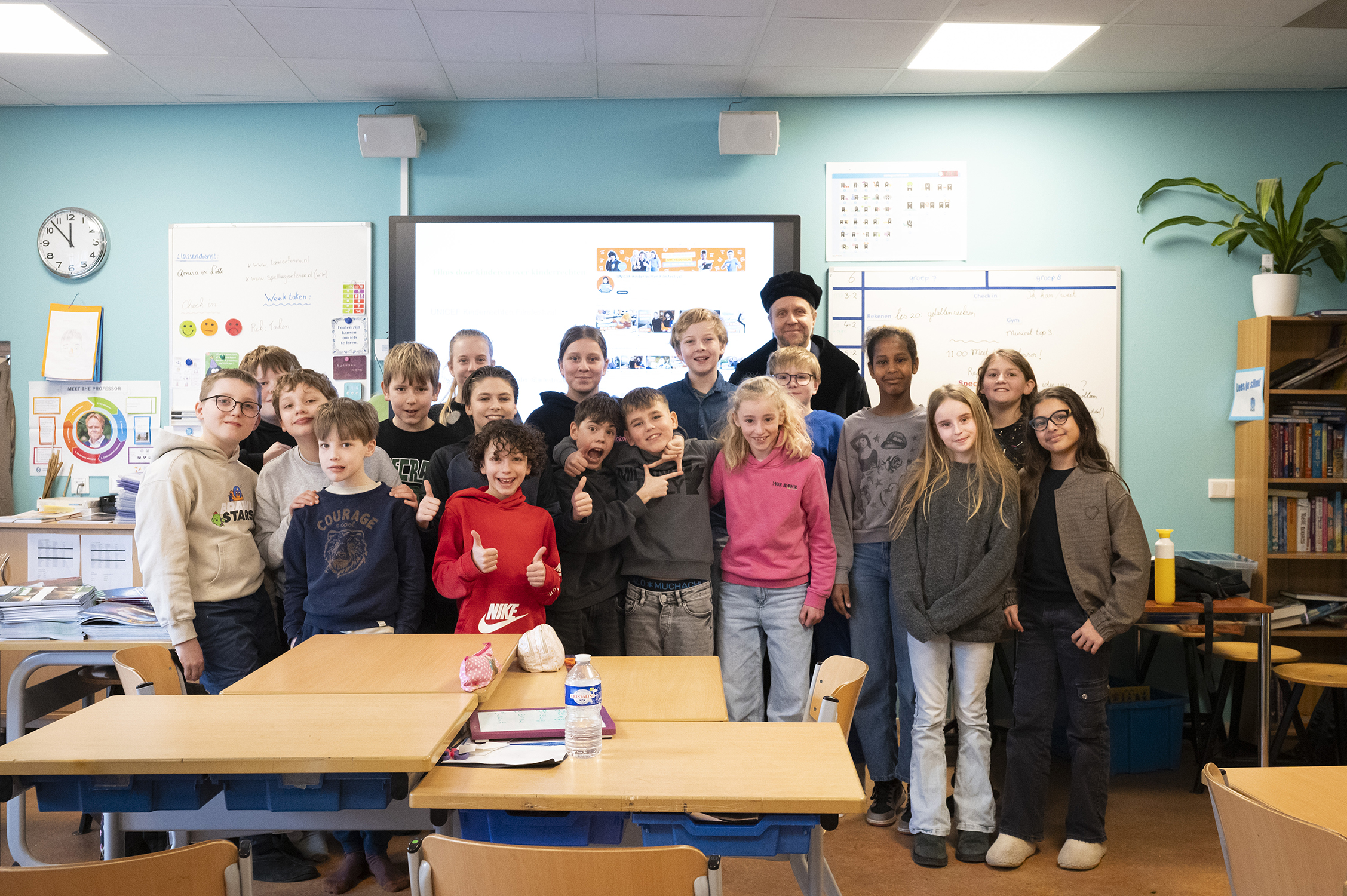
After a fascinating lesson all about their rights, time for a group photo
Solving problems
Back in The Hague hands shoot up in the classroom. ‘Is it fun being a professor?’ one boy asks. For him it’s not about the title, says Van Leeuwen, and he prefers wearing regular clothes to his gown. But he loves doing research. ‘Solving problems. Sometimes the simplest solutions are the best.’
‘What should you do if you want to become a professor?’ one girl asks.
‘Work hard. Just be really good in your field’, says Van Leeuwen. He explains how he has dyslexia, did senior general secondary education and studied chemistry in Leiden.
‘And if you hadn’t become a professor?’ another child asks.
‘I think I’d have been a mechanic or a gardener’, he answers. ‘Work with my hands, be outside and work with others.’
Making the invisible visible
Van Leeuwen explains that he and his colleagues are developing techniques for robot-assisted surgery. ‘We make molecules that emit light to make the invisible – the diseased tissue in the body – visible.’ He avoids complicated words like radiology and fluorescence-guided surgery. ‘Have any of you ever done anything with invisible ink?’ A few hands are put up.
-
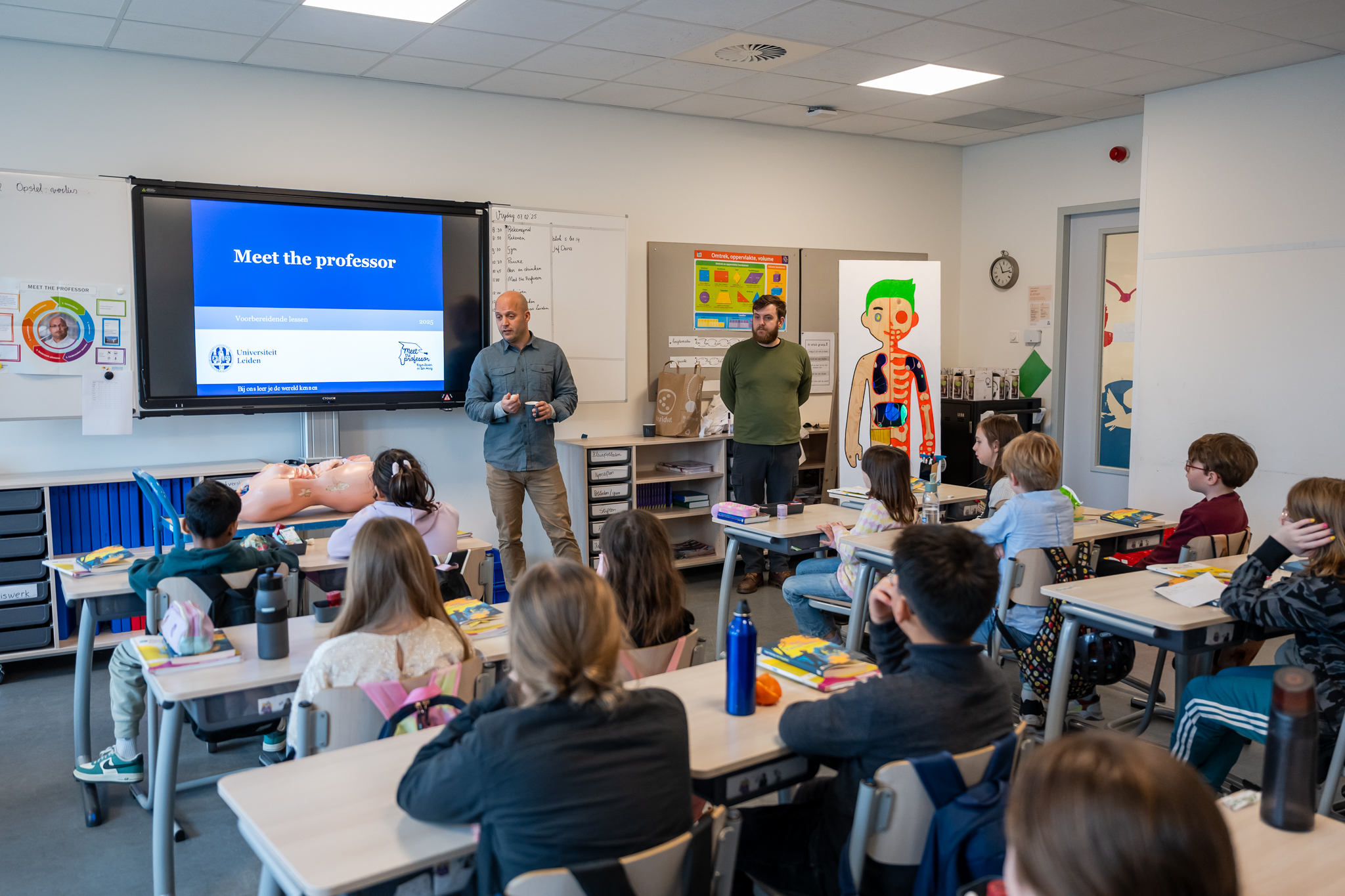
Fijs van Leeuwen tells a class from De Spiegel primary school in The Hague about radiology -
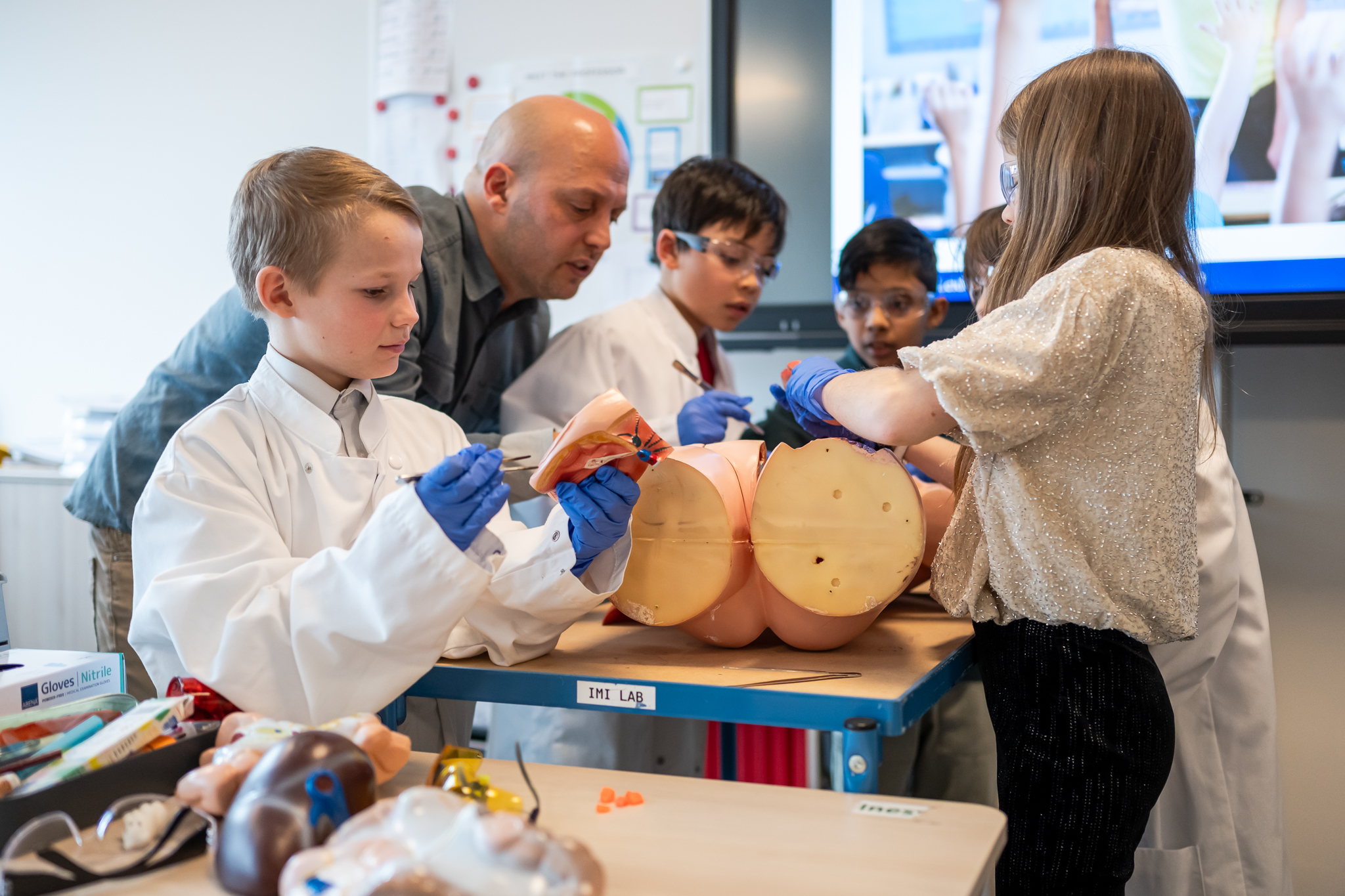
How does the human body work and how can you make diseased tissue visible? -

Performing surgery on a gigantic Operation game -
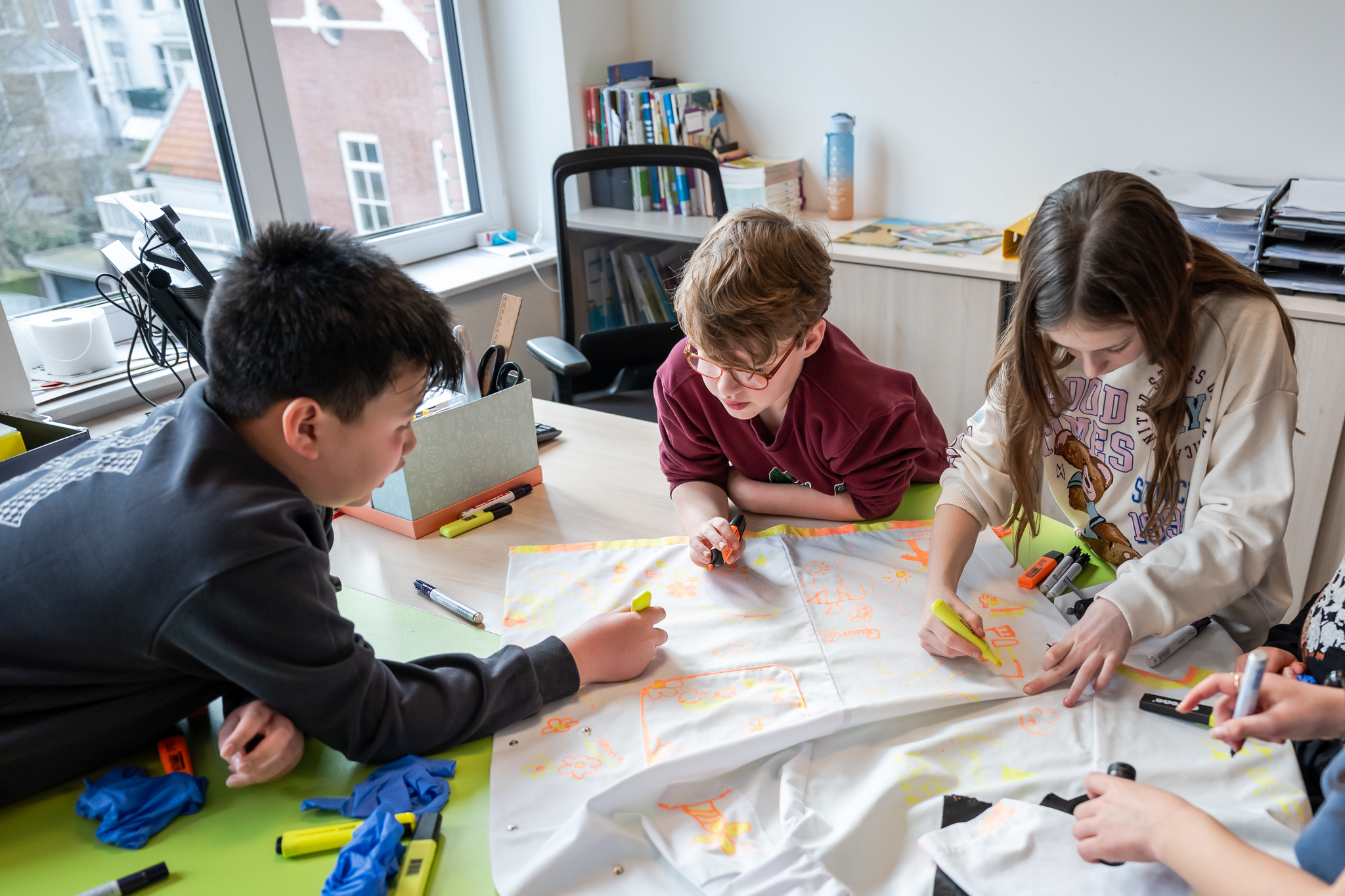
Drawing on a real lab coat with fluorescent pens
The children set to work in groups. ‘Do it carefully, like it’s a real operation’, the professor tells the children who are removing plastic organs from a large mannequin. ‘Everything has to go back in the same place.’ A boy shines a real UV torch in and small pieces of plastic (the diseased tissue) become visible, which a girl fishes out with a pair of tweezers.
Operation game
The second group stands next to the life-size wooden Operation game built by the researchers and christened Dries. They have brought it here in their van. ‘If you touch the edge with the tweezers, the light will flash and you’re out’, Van Meerbeek explains. ‘You have two lives per game.’
The third group draws with invisible ink on the white lab coat Van Leeuwen will wear onstage at the Dies Natalis ceremony later that day. The assignment: draw what you want the future to be like for children – also in places that don’t have such a wonderful school like this one. The coat soon fills with flowers, trees, houses, names, unusual shapes and a cat.
After Fijs van Leeuwen’s lesson in The Hague and Ton Liefaard’s in Leiden, the children are brought by coach to Leiden’s Pieterskerk. They take to the stage during the opening of the Dies Natalis – an extra-special one this year to celebrate the university’s 450th anniversary. Then it’s off for a tour of the Hortus botanicus, where the Plants & Planets exhibition opened on the same day.
-

The children ake to the stage during the opening of the Dies Natalis. Photo: Monique Shaw -

A tour of the Hortus botanicus. Photo: Patrice Borger
Meet the Professor
In Meet the Professor, professors visit primary schools and tell children all about what it’s like to conduct research and be a professor. The focus is on exploratory learning: in six preparatory the pupils gradually learn more about the professor who will be coming to visit them. This was the seventh edition of Meet the Professor.
